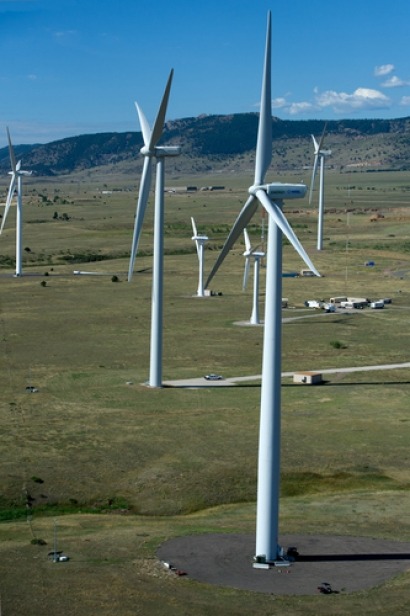
The UK wind industry trade association RenewableUK has reacted to the government’s guidance on community engagement and increased local benefits. The group has agreed to recommend a fivefold increase in the future level of community benefit funds which onshore wind farms provide to local communities in England stating that it wants to continue to work closely with government and local communities in order to ensure they share more of the economic benefits of wind energy.
RenewableUK has also welcomed the development of good practice guidance and a new government register of community benefits.
“For a long time our members have worked closely with the communities in which they operate” said RenewableUK Chief Executive Maria McCaffery. “This guidance from Government will help to shape the way our industry engages with local people even more closely in the future. Wind energy already brings many benefits to local communities; existing schemes have been used to fund everything from building sports facilities or village halls to financing training programmes for young people. We will have to re-examine the wind industry’s Community Benefits Protocol, devised by RenewableUK, and consult with our members to determine how we can achieve what the Government is asking us to provide.”
Ms McCaffery went on to add that given the significant amount of investment that is required when developing wind farms, the additional cost incurred as a result of the government’s advice may make some schemes uneconomic.
“That said, we recognise the need to ensure good practice across the industry and will continue to work with Government and local authorities to benefit communities right across the country which are hosting our clean energy future” she continued. “We also take on board Government announcements on pre-application consultation. Industry will comply with these new requirements fully. We await with interest the guidance from the Department for Communities and Local Government on how the National Planning Policy Framework should be interpreted. When this guidance is drafted consideration needs to be given over the important role onshore wind has to play in our energy system.”
RenewableUK estimates that, under the new guidelines, onshore projects already announced (i.e. those currently in planning, or approved but not under construction representing nearly 1,500MW of capacity) would contribute benefits worth nearly £147,850,000 over the 20-year lifetime of those schemes. This would represent a fivefold increase in the value of benefits to be funded by the industry for local communities in England.
However, some critics of the wind industry have begun to believe that this development represents the end of onshore wind development in Britain. Many Tories consider that some communities will use the new powers to prevent wind farms being built in the first place. Nevertheless, consistent polling of public opinion has shown that most people in the UK want more wind power, not less with two such polls last year finding 60 percent and 66 percent respectively in favour of more wind energy.
When asked on Radio 4’s Today programme if there will be more wind power deployed in the UK overall, the Conservative Junior Energy Minister, Michael Fallon, said: “There will be more. There will be more wind offshore. There will be some more wind onshore but only where they are appropriately sited and have the support of the local community.”
James Murray, editor of Business Green, has also poured cold water on the idea that the new guidance represents a victory for anti-wind campaigners. “Not only is this supposed planning crackdown accompanied by a raft of measures designed to make wind farms more attractive to local communities, it also fails to include any significant changes to the current planning regime” Mr Murray pointed out in his blog. “There is no veto on offer to opponents of planned wind farms and no plans for the kind of local referendums that would be required to enable such vetoes in the first place. There are no prescriptive planning rules that would force wind farm developers to comply with buffer zones or categorically rule out certain areas. In fact, the only substantive change is a new legal requirement for developers of larger wind farms to consult with local communities before they lodge a planning application - an approach that is already best practice across the industry and is regarded by many developers as an effective means of working with communities and reducing the likelihood of objections.”
Mr Murray went on to state that this explains why the wind industry remains fairly relaxed about the issue and that the guidance is merely an attempt by the government to ‘spruce up’ existing policy recommendations that have been in place for some considerable time. What it may do however is encourage anti-wind campaigners to increase their attacks on the industry by promoting anti-wind and anti-green rhetoric. The result of that will be more mixed signals given to investors rather than the stable policy environment that they so urgently need in order to support the sector.
Further information:

